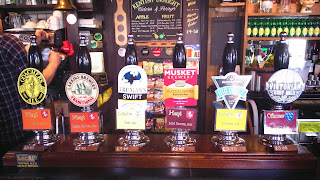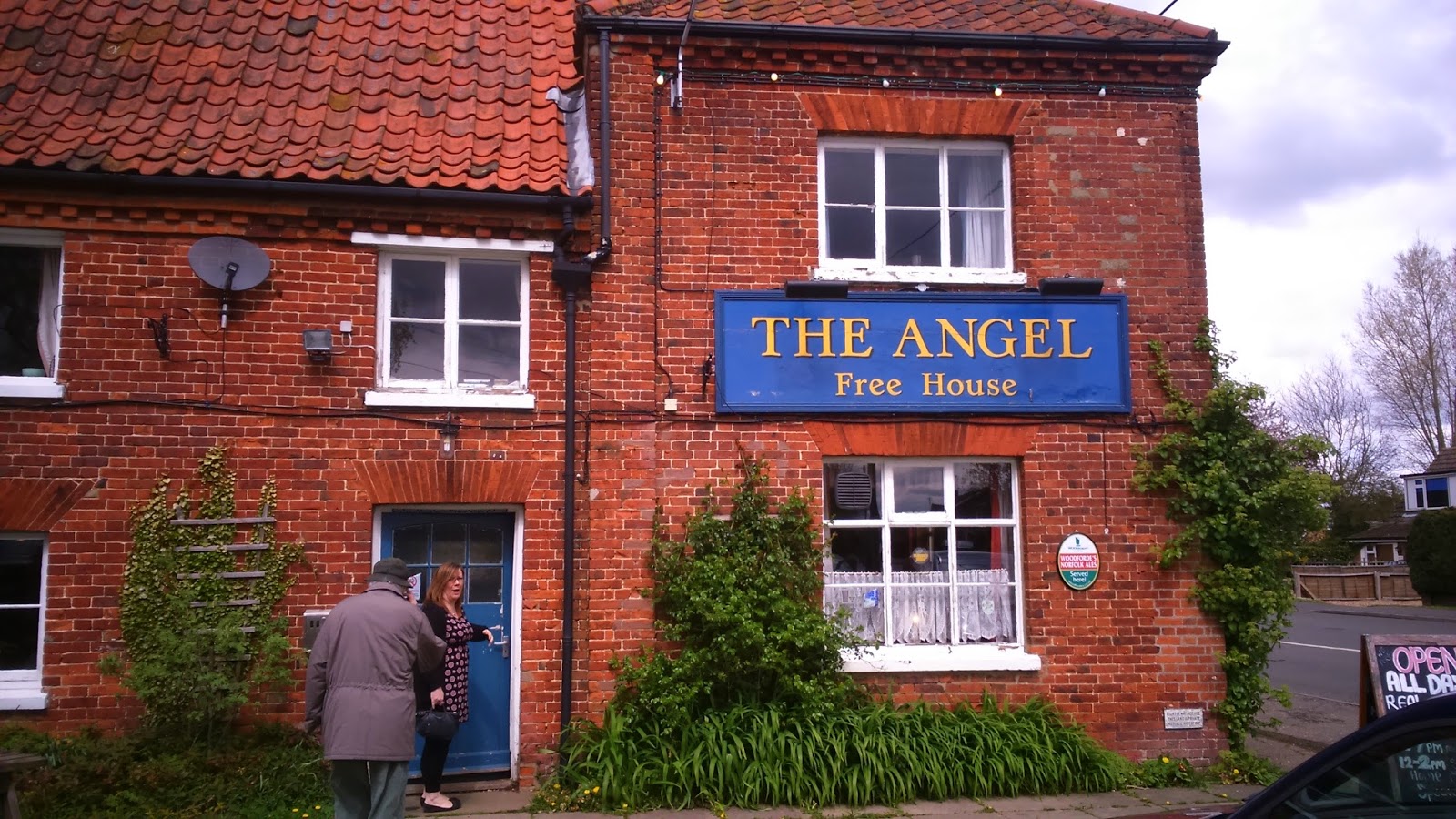 Yesterdays’ news concerning the takeover of the long-established, pioneering craft beer brewer, Meantime of Greenwich, certainly set the blogosphere alight, with numerous writers wading in with
their four penneth worth. So on the premise of if you can’t beat them, why not
join them, I thought I would add some thoughts of my own to the fray.
Yesterdays’ news concerning the takeover of the long-established, pioneering craft beer brewer, Meantime of Greenwich, certainly set the blogosphere alight, with numerous writers wading in with
their four penneth worth. So on the premise of if you can’t beat them, why not
join them, I thought I would add some thoughts of my own to the fray.
My first thought is one of
congratulations to Meantime’s founder and Head Brewer, Alastair Hook. If anyone
deserved his place in the sun, then this knowledgeable and, at times,
visionary exponent of all that is best in beer, certainly does. For the last fifteen
years, Alastair has unashamedly ploughed his own furrow, undeterred by trends
and eschewing the traditionalists who shunned Meantime because there was no
cask beer in their portfolio. Instead he carried on, steely determined to
achieve his ambition of putting London
back where it deservedly belongs; back on the world brewing stage.
 I first became aware Meantime through the lagers they brewed
for Sainsbury’s, back in the early 2000’s. Included in the range were a Vienna-style
lager and a Kölsch. These formed an early part of the supermarket’s “Taste the
Difference” range. Well, you certainly could taste the difference with Alastair’s beers. The lagers
he produced, were brewed in accordance with the Reinheitsgebot, and were full
flavoured, with plenty of malt body, set against some wonderful hop aromas and
flavours, from the use of traditional Hallertau and Saaz hops.
I first became aware Meantime through the lagers they brewed
for Sainsbury’s, back in the early 2000’s. Included in the range were a Vienna-style
lager and a Kölsch. These formed an early part of the supermarket’s “Taste the
Difference” range. Well, you certainly could taste the difference with Alastair’s beers. The lagers
he produced, were brewed in accordance with the Reinheitsgebot, and were full
flavoured, with plenty of malt body, set against some wonderful hop aromas and
flavours, from the use of traditional Hallertau and Saaz hops.
It was disappointing when Sainsbury’s dropped these beers,
but Meantime went on to bigger and better things, with some innovative takes on
former English classics, such as Porter and India Pale Ale. Both beers are sold
in large, 750ml, Champagne-style bottles, complete with wired-in corks. They
also produce an excellent London Lager, London Stout and London Pale Ale, as
well as various wheat, and fruit beers.
 |
| Beer garden at Old Brewery, Greenwich |
In 2010 I visited what was then Meantime’s sole pub, the Greenwich
Union on Royal Hill, Greenwich. The
pub is next door to the famous King Richard I; a Young’s pub, also known as
Tolly’s, after the former owning brewery, Tolly Cobbold of Ipswich. I wrote
about my visit to this pleasant pub here. In the same year the company opened the Old
Brewery Bar & Restaurant with a brewery in the original 1836 Brewhouse of the
Old Royal
Naval College,
Greenwich. A cold, but bright early
December day in 2012, saw my son and I braving the cold and sitting out in the
beer garden, behind the Old Naval
College enjoying a Meantime
Oktoberfest and a London Lager.
I alluded earlier to the fact Meantime had incurred CAMRA’s
wrath by their refusal to produce any cask-conditioned ale. There is a reason
for this; Alastair is of the firm opinion that oxygen is the enemy of good
beer. Whilst I bow to his superior knowledge as a brewer with many years’
experience, I disagree slightly with him on this point, as in my opinion, a
relatively low exposure to oxygen, at the start of the conditioning process, is
beneficial to flavour development within cask beer; although obviously once the
beer has finished conditioning, and is ready to be served, oxygen really does
need to be excluded to prevent off-flavours caused by oxidation, from
developing.
Still Meantime is his company (or should that be was?), and
the draught, keg beers which Meantime turn out, together with the bottles of
course, are all very good. So good that global brewing giant, SABMiller have
bought the business for an undisclosed sum. The takeover makes Meantime the
first home-grown British brewer within SABMiller’s global business, but an
obvious sign of the regard which the brewing world holds the Greenwich based company.
As an integral part of the deal, Meantime’s existing
management team, led by Chief Executive Nick Miller and Meantime Founder and
Brew Master Alastair Hook, will continue to run the company supported by the
current Sales and Marketing, Production and Retail teams. But with SABMiller
investing heavily in their new acquisition, a two-part plan for growth will be
put into place.
The first part involves expansion of the Greenwich Brewery enabling the continued growth of Meantime’s
existing portfolio of modern craft beers – led by the core range of London Pale
Ale, London Lager, Yakima Red and Pilsner. This in turn will lead to the
company expanding beyond its traditional London heartland, providing more drinkers across the UK and further afield with the chance to enjoy Meantime’s
high quality beers.
 |
| New owners |
Secondly, the installation of a new pilot brewing
facility at Meantime’s Greenwich brewery will be led by Alastair Hook and will become a
centre for innovation and new product development for SABMiller Europe. The
pilot brewery will allow Meantime to continue to create innovative beer styles
for Meantime’s Seasonal, Limited Edition and permanent ranges.
All good positive stuff, and there’s nothing here that I
could take issue with. Plenty of other writers and correspondents have,
however; accusing the company of selling out. Well if someone came along and
offered you a pile of cash for the company you started from scratch, wouldn’t
you jump at the opportunity? If the deal
also included expansion of your existing facility, and the chance to dedicate
yourself to producing even more exiting and innovative brews, would you turn it
down? Lastly, if you no longer had to worry about paying back the loans you
took out to expand your facility and grow your business, wouldn’t you be a
happy bunny? I know I would!
There are certainly some interesting times ahead, and I
for one look forward to seeing new and existing Meantime beer becoming much
more widely available, throughout the UK.

































